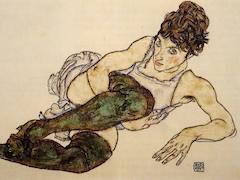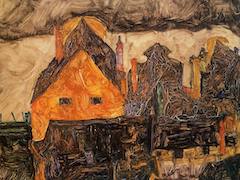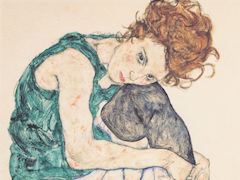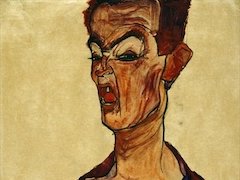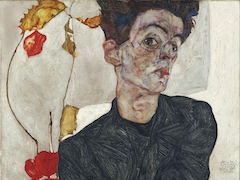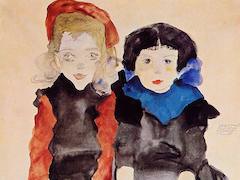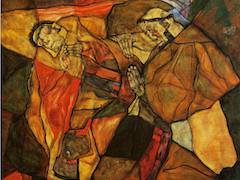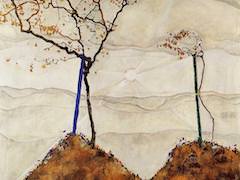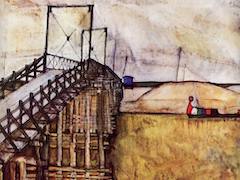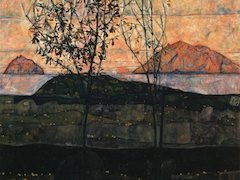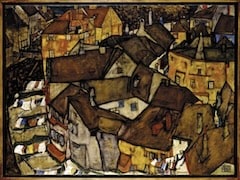Sunflowers, 1911 by Egon Schiele

Egon Schiele's choice of the sunflowers as a motif undoubtedly owed something to the precedents set by Van Gogh and Gustav Klimt. Van Gogh's funflowers had been popular in Vienna ever since the artist's work was first exhibited there in the early year of the twentieth century. Shortly after a 1906 Van Gogh exhibition at the Galerie Miethke, Klimt painted two pictures of the subject, both of which were shown at the large "Kunstschau" (Art Show) held in Vienna in 1908.
Schiele, who undoubtedly knew Gustav Klim'ts Sunflower in the original and was familiar with those of Van Gogh from reproductions if not from direct contact, nevertheless brought his own interpretation to the subject. Van Gogh's canvases tended to depict formal flower arrangements in vases, while Klimt's sunflowers were shown in nature, surrounded by suffocatingly dense botanical life. Like Klimt's sunflowers, Schieles' appear in their natural state, with fat stalks and leaves still attached. However, as was the younger artist's wont, the background has been left vacant, so that the flowers, lacking any mollifying context, represent elemental entities in and of themselves.
For all three artists, the sun and its earthly counterpart, the sunflower, were embodiments of the life force. Nonetheless, unlike the sun, the sunflower is mortal, and for Schiele it was tinged with the indelible mark of imminent decay. Flowering in the last warm days between summer and autumn, the sunflower blooms to die and bequeath the world its seeds. That Schiele's sunflowers are past their peak bloom is amply evidenced by their darkened centers and droopy leaves. This was the ideal motif for an artist who had coined the coined the maxim:
Everything is living dead."

